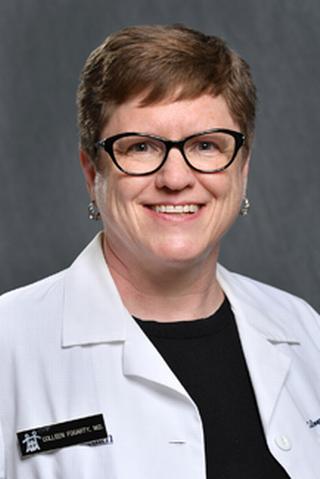Thoughts from the Chair
I’m grateful for the opportunity to have a six-month sabbatical after serving for five years as Chair and will use this brief column as an update. I spent the summer working on professional creative writing and have submitted several poems and short narratives for publication.Since early September, and as I write this, I have been in Washington, D.C. working on health policy regarding family medicine and primary care. Having led the department through the pandemic, I personally experienced and witnessed the toll this took on all of us—certainly, the general public—and especially those of us in healthcare. Sabbatical is an opportunity to step back, reflect, and study the role of family medicine in the United States.
Family medicine and primary care were in crisis prior to 2020, and burnout was recognized in physicians and other healthcare workers prior to 2016. The pandemic made clearer the cracks in our public-health and primary-care infrastructure as well as the many ways systemic racism and other sociodemographic biases keep some people from equitable health.
The Robert Graham Center (RGC) for Policy Studies in Family Medicine and Primary Care, part of the American Academy of Family Physicians, welcomed me for a month as a Larry A. Green Visiting Scholar for September. Together with family-physician leaders and researchers at the Graham Center
I’m studying the family physician workforce and its changes since 2017. In October, I am continuing this work, and have joined the Center for Professionalism and Values in Healthcare of the American Board of Family Medicine Foundation as a Visiting Scholar.
It’s been energizing to explore large national data sets, learn from government officials and policy experts, and collaborate with outstanding researchers to better understand the national primary-care landscape. I am impressed that outstanding researchers at these centers are working to understand the opportunities and threats facing FM, primary care in general, and working closely with state and federal agencies to address many of the concerns.
There is no doubt that family physicians remain essential for primary medical care in our nation, joined by other primary care clinicians (general internists, pediatricians, geriatricians, nurse practitioners, physician assistants/associates), behavioral health professionals (psychologists, psychiatrists, social workers, and others), and clinical pharmacists.
I look forward to coming back to the DFM in January, reinvigorated to continue our crucial work together. It is clear that our diverse-training programs and interdisciplinary team are key components in meeting our country’s healthcare-workforce needs. Through our shared biopsychosocial framework, the rich interprofessional and interdisciplinary collaborations we have built and our scholarly expertise, we have an opportunity to contribute to improving health in our region and beyond. I am committed to a busy few more months and look forward to being back with all of you in January.
Please see some of my recent published articles below:
Perfect Gratitude 10/1/2024 Journal of General Internal Medicine
https://link.springer.com/article/10.1007/s11606-024-09044-7
The Day I Almost Walked Away: Trust, Gratitude, and the Power of Teamwork. Annals of Family Medicine,
Article https://www.annfammed.org/content/22/5/451
podcast https://tinyurl.com/5ew4v9vk
Holy Water, 9/12/24
https://pulsevoices.org/pulse-more-voices/2024/palliative-and-hospice-care/holy-water/
Skeptical, 8/24/24
https://pulsevoices.org/pulse-more-voices/2024/a-turn-for-the-better/skeptical/
4/3/2025
You may also like
No related posts found.
 Colleen T. Fogarty, M.D., M.Sc.
Colleen T. Fogarty, M.D., M.Sc.